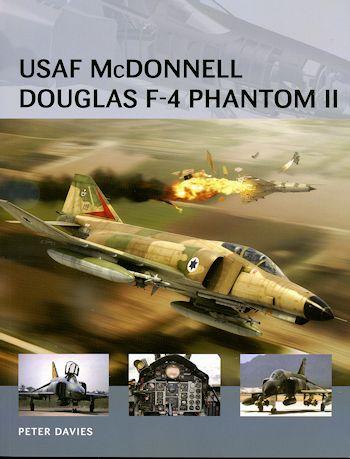 Considered
by many to be the finest interceptor/fighter-bomber of the 60's and early 70's,
the F-4 Phantom II was built in more numbers than any other western fighter jet.
Initially designed as a fleet defense interceptor for the US Navy, its
capabilities were such that more were built for the USAF than were built for the
Navy.
Considered
by many to be the finest interceptor/fighter-bomber of the 60's and early 70's,
the F-4 Phantom II was built in more numbers than any other western fighter jet.
Initially designed as a fleet defense interceptor for the US Navy, its
capabilities were such that more were built for the USAF than were built for the
Navy.
For its time, it was the fastest, quickest climbing and most versatile
aircraft produced with well over 5,000 coming off the assembly line in St. Louis
as well as in Japan where it was built under license by Mitsubishi. The aircraft
was also used in considerable numbers by Great Britain, Germany, Israel, Iran,
Turkey, Greece and other nations. Some, such as Australia, only used a small
number of them and in the case of OZ, they were interim planes until their
F-111Cs became available.
The Navy had many aircraft acting as interceptors before the Phantom II
came on line. All were deficient in one way or the other from lack of range to
poor power, to unreliable avionics. McDonnell had some success with their F3H
Demon, but it was lacking in power and only had one engine. Two engines seemed
to be the best way to do naval fighters as it provided some safety if one engine
was damaged over water. This was the late 1950s and it was foolishly decided
that guns were no longer needed so the Phantom was the first all missile Naval
aircraft to reach operational status. The Air Force had similar planes like the
F-101B, F-102 and F-106 with no guns, but they were never used in anger and
their missiles were something of a chore to use and unreliable. The F-4 had the
semi-reliable Sidewinder for close in attacks and the less reliable Sparrow for
long range. Gun pods could be used, but they were not very accurate due to their
mounting.
Soon after the F4H-1 became operational, the USAF saw that this was a
plane that met the requirements they had for their next generation fighter as
they needed something to replace the F-100 and to supplement the F-105. By this
time the designation F4H had been changed to F-4 and the production Phantom IIs
were designation F-4B. The USAF borrowed a pair for PR purposes and called it
the F-110A Spectre. This name was short lived and the USAF-spec Phantoms were to
be the F-4C. Before any of those reached the USAF, they borrowed several dozen
F-4Bs to equip their first training wing. These planes were returned to the Navy
once USAF production got under way.
From there on, things took off. The USAF upgraded the avionics in the C
to make the D model and later added a gun to the nose for the E model. Some E
models were converted to Wild Weasels as the G and later many E and G models
were converted to QF-4 drones and expended as targets.
Overseas, the E model became the F for Germany and differed in no
Sparrow capability. The Japanese built the E as the EJ and later modified many
as the EJkai. USAF standard C,D, and E planes were exported to Israel, Spain,
Greece, Turkey, Egypt, South Korea, and Iran to name most of them. Even today,
the Phantom can still be found in small numbers though their operational time is
soon to end.
In this book, Peter Davies covers the design, development and use of the
F-4 by the various services and includes some of their combat as well. The book
is superbly illustrated with mostly color photographs and a few pages of artwork
that include a cutaway drawing in the back of the book in a fold-out page.
It is a very nice primer on the type and a book that any enthusiast of
the type should have on their shelves.
May 2013
For more on the complete line of Osprey books,
visit www.ospreypublishing.com. In the US, it is
Osprey Direct at 44-02 23rd St, Suite 219, Long Island City, NY 11101., where you can
get a catalogue of available books.
If you would like your product reviewed fairly and
fairly quickly, please
contact
the editor or see other details in the
Note to
Contributors.
 Considered
by many to be the finest interceptor/fighter-bomber of the 60's and early 70's,
the F-4 Phantom II was built in more numbers than any other western fighter jet.
Initially designed as a fleet defense interceptor for the US Navy, its
capabilities were such that more were built for the USAF than were built for the
Navy.
Considered
by many to be the finest interceptor/fighter-bomber of the 60's and early 70's,
the F-4 Phantom II was built in more numbers than any other western fighter jet.
Initially designed as a fleet defense interceptor for the US Navy, its
capabilities were such that more were built for the USAF than were built for the
Navy.